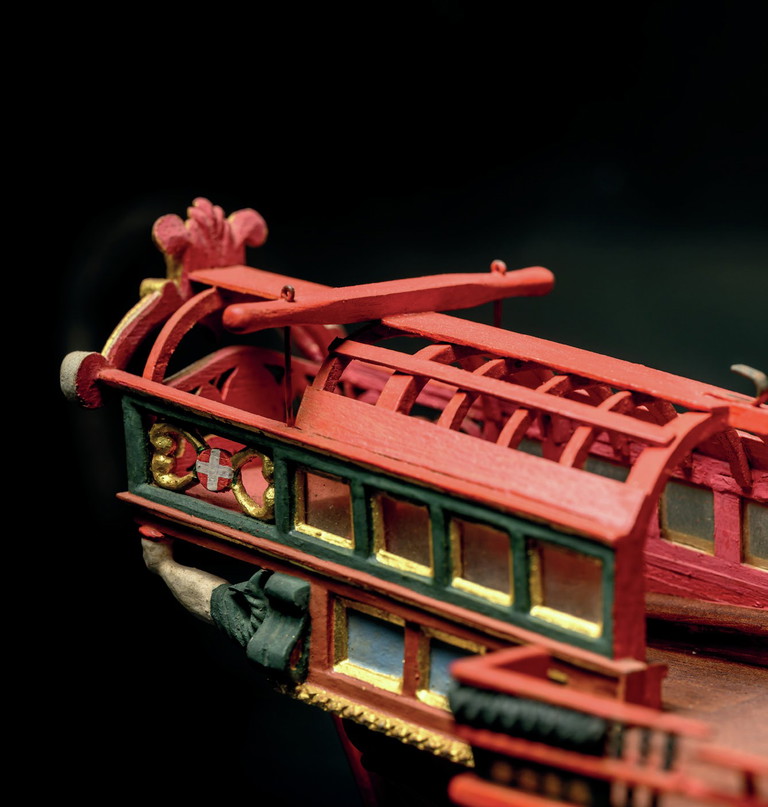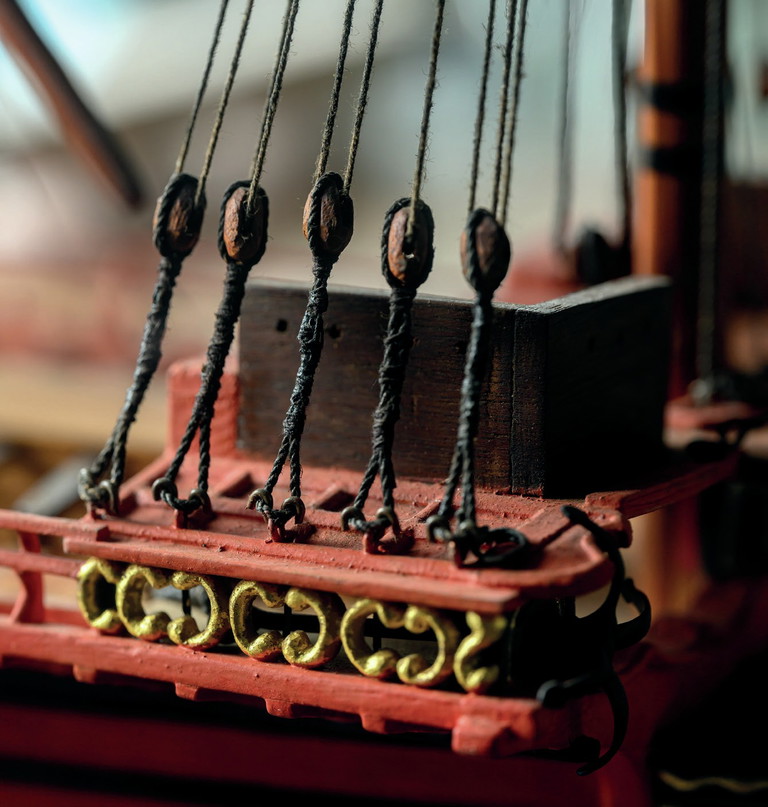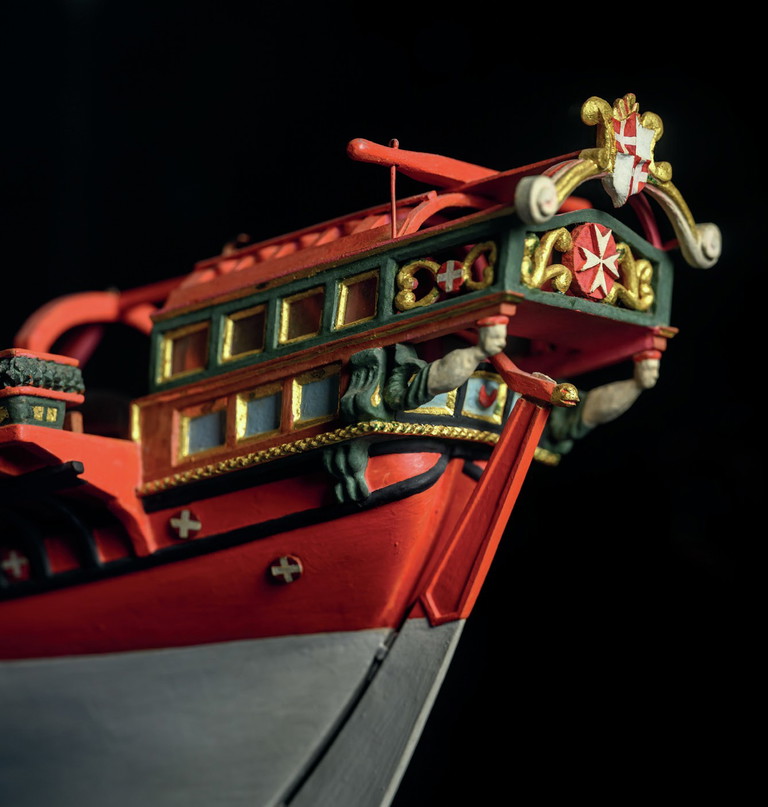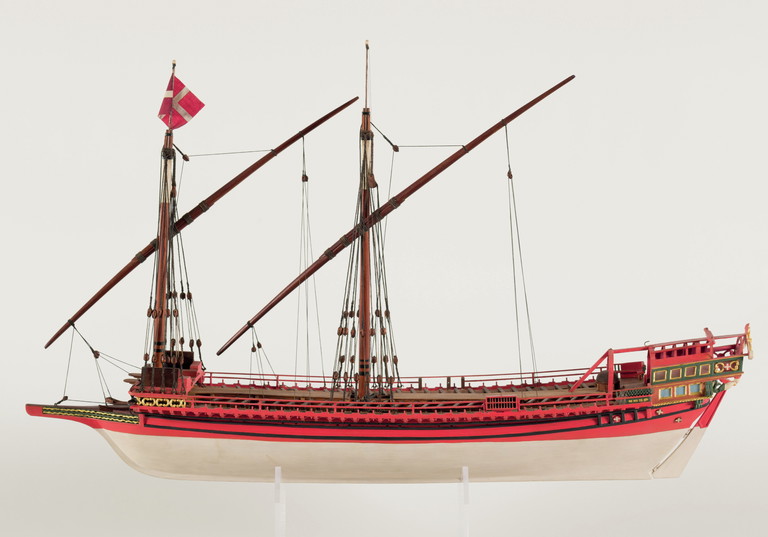THE MALTA OPUS
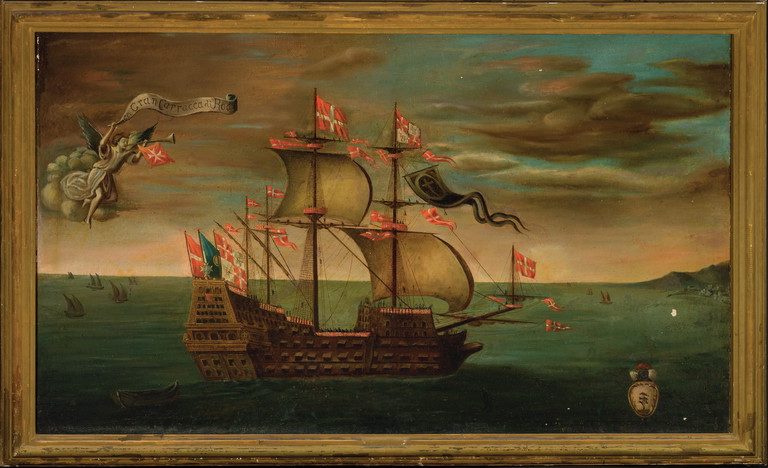
The Galley Model
The Oar Powered War Machine
In the Mediterranean, the galley was the one sea craft that withstood the test of time for over 2,500 years. The Phoenicians, the great mariners of antiquity, used the galley, calling it navis lunga. The utilization of the galley remained the same. It was a fighting ship. Its evolution was a very slow process. The Phoenicians, the Greeks, the Carthaginians and the Romans all employed the galley to gain control of the inland sea. The basic qualities and characteristics of the galley never changed: lying low in the water, being powered by oars and sail, while also having a tambouret (ram). The bireme and trireme were all ancestors of the eighteenth-century Mediterranean galley. The bireme and triremes were galleys of two or three decks, respectively, forerunners of the Venetian galleass. Their main purpose was to have more oars to achieve greater speed. While considering the evolution of the galley throughout its long history, one must not forget to mention the Venetians. Their most famous arsenal had always been among the best in the Mediterranean. Other nations at the forefront of galley technology in the early modern world were the Spanish, the Genovese, and the Ottomans.
An important change in the galley structure occurred in the sixteenth-century. This involved the number of oars and the size of the ciurma, which were the galley rowers employed on the galleys. For reasons that are not entirely clear, the rowing method of the sensile was abandoned for the system of scaloccio. The scaloccio method was a system where all rowers sat on a single bench pulling at a single oar. The galley model at the Maritime Museum in Birgu shows the scaloccio method of rowing. It seems the Spanish were the first to undertake such a change between 1552 and 1557. All other nations followed. Venice had always been reluctant to make such changes and in fact it took some time to implement the new methods. As late as the battle of Lepanto, the Venetians still used the sensile rowing method and perhaps even some Ottoman galleys were still using the method. The knights themselves, according to Bosio, used a sensile system up to 1523. This change over from the sensile system to the scaloccio system gave rise to the easier recruitment of the galley rowers. This eliminated the difficulty of finding a full complement of skilful oarsmen.
These were the last major modifications to the galley structure. The only other significant change would occur in the eighteenth century, involving the addition of a mizzen mast with a lateen sail to the two masts already employed on the galleys. This leads us to believe that the model on display at the Maritime Museum belongs to the 17th century. The galley was a fighting ship pure and simple and the strength of the Order’s navy lay in the galley.
The Maritime Museum’s galley model in Birgu is an important aid to the scholar. It provides a clearer picture of the galley and its structure. The model has been restored by Joseph Muscat, who re-built the galley that had suffered considerable damage during the Second World War. It must be emphasized that this model of the galley was among the oldest in the Mediterranean.
The Maltese galley was not much different from other galleys of the Mediterranean. There is no solid evidence to substantiate the claim that the Order’s galley was built differently from foreign ones. The Muslim and the Venetian galley had their bows slightly higher, for example. Thus the coursier, or bow-chaser, was used to better effects in combat by the Order’s galley. The Order’s galley carried more provisions than many of the other Christian navies, and much more than its Muslim counterpart. Still, the Hospitaller galleys were the fastest in the Mediterranean and indeed they outran Neapolitan and Venetian galleys in a race.
The building of the Maltese galley was undertaken in Malta, as well as abroad. Those built in Malta were constructed at Birgu. When the Order arrived in Malta, it found a population that was already accustomed to building sea craft. This is evidenced by the fact that the first Hospitaller galley was built and launched in Malta in 1535. All galleys were built under a wooden shed, a site occupied today by the Malta Maritime Museum. This wooden structure was turned into a fine, stone, arched, barrel-vaulted arsenal by Grandmaster Adrien Wignacourt at the turn of the 18th century. However, for every such galley built in Malta, Muscat claims that another 2.5 were built abroad. The foreign arsenals where such galleys were built included those of Messina, Leghorn, Genoa, Palermo, Pisa, Barcelona, and Marseille. In Malta, a galley would take four years to complete. Considering that galleys took that long to build, their lifespan was expected to be eight years.
Once built, the galley was as splendid as any other form of sea craft of the day. The knights went to great measures to make sure they owned the best galleys in the Mediterranean. A profile view of a galley gives the impression that it is split into three parts: the stern, where the carosse was; the bows fortified by the rambata, where the brunt of the fighting took place; and the mid part of the galley, known as the corsia, which housed the ciurma to its sides.
